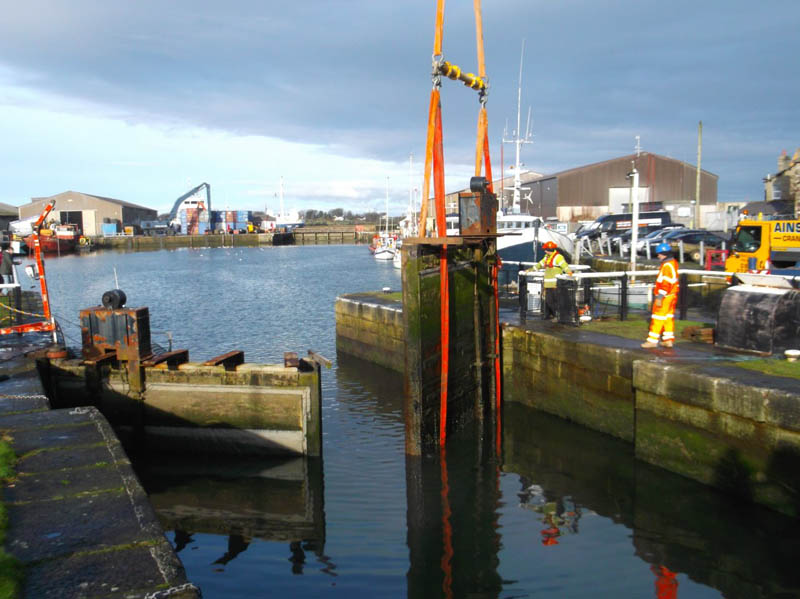A historic sea lock on the Lancaster Canal at Glasson Dock is undergoing a five week refurbishment, thanks to a £33,000 winter works package by the Canal & River Trust.
The charity, which cares for 2,000 miles of waterways, carries out an annual programme of restoration and repairs to the nation’s waterways during the winter to minimise the inconvenience of navigation closures to boaters during the busy summer season.
The lock dates back to 1824 and is a scheduled monument. The gate refurbishment is a complex job, with the gates representing the divide between the freshwater canal on one side and tidal seawater on the other. Divers were employed to release the underwater chains holding the large 10 tonne gates in place. The gates were then cradled in slings and craned out of the water into a temporary open air repair yard created on the grass verge next to the lock.
The wooden frames, which are made of the dense hardwood greenheart, have been in situ for at least 40 years and are amazingly still in good condition but the corroded metalwork and oak planking are being replaced.
The lock gates mark the end of the Lancaster Canal Glasson Branch and are the gateway to the Irish Sea, via Glasson Dock and the picturesque Lune estuary. They are mainly used by sea-going yachts and cruisers moored in Glasson Basin Marina.
Dave Bradbury, Lancaster Canal supervisor for the Canal & River Trust, explained: “This project has been completely different to our usual maintenance role on the canal mainline. The gates are twice as heavy as standard canal lock gates due to their size and density of the hardwood. Interestingly the wood below the waterline has been preserved in a much better state than the wood exposed to the air.
“The wildlife is completely different too. When we stripped off the rotten planking we discovered hundreds of small eels, crabs and shrimps clinging to the wood, and the frames are covered in barnacles.
“Traditional oak lock gates usually have a lifespan of around two or three decades. We don’t hold records for the precise date when the Glasson Dock gates were last replaced but the local lock keeper John Holstein, who retired a couple of years ago, spent 38 years working here and can’t recall this happening on his watch.”
The sea lock refurbishment is being carried out in two stages. The newly restored sea lock gates are due to be operational from 13 February but the lock will be closed again for a further five weeks in November for the second stage of the project when the lock gates leading to Glasson Basin are scheduled for a similar refurbishment.
This winter the Trust will be spending over £45million to restore around 164 lock gates across the country, as well as carrying out repairs to aqueducts, reservoirs and tunnels. To find out more about the Trust’s restoration work, go to www.canalrivertrust.org.uk

